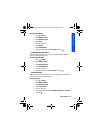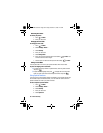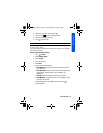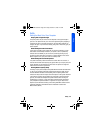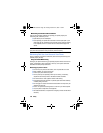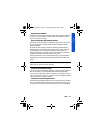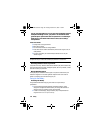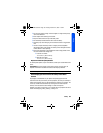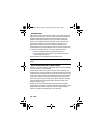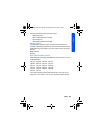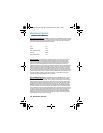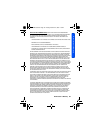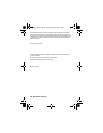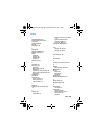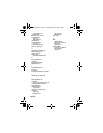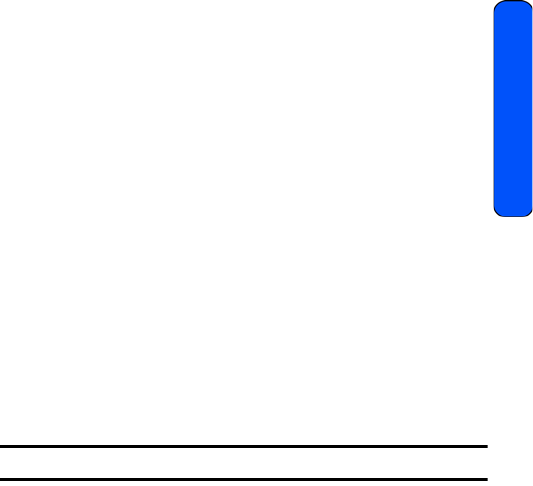
Safety 103
Safety
• Do not use the battery charger in direct sunlight or in high humidity areas,
such as the bathroom.
• Never dispose of the battery by incineration.
• Keep the metal contacts on top of the battery clean.
• Do not attempt to disassemble or short-circuit the battery.
• The battery may need recharging if it has not been used for a long period of
time.
• It’s best to replace the battery when it no longer provides acceptable
performance. When used correctly, the battery can be recharged hundreds
of times before it needs replacing.
• Do not store the battery in high temperature areas for long periods of time.
It’s best to follow these storage rules:
• Less than one month:
-4º F to 140º F (-20º C to 60º C)
• More than one month:
-4º F to 113º F (-20º C to 45º C)
Disposal of Lithium Ion (LiIon) Batteries
For safe disposal options of your LiIon batteries, contact your nearest BMC service
center.
Special Note: Be sure to dispose of your battery properly. In some areas, the
disposal of batteries in household or business trash may be prohibited.
Note: For safety, do not handle a damaged or leaking LiIon battery.
Acknowledging Special Precautions and Industry Canada Notice
Cautions
Any changes or modifications to your phone not expressly approved in this
document could void your warranty for this equipment, and void your authority to
operate this equipment. Only use approved batteries, antennas, and chargers. The
use of any unauthorized accessories may be dangerous and void the phone
warranty if said accessories cause damage or a defect to the phone.
Although your phone is quite sturdy, it is a complex piece of equipment and can be
broken. Avoid dropping, hitting, bending, or sitting on it.
r330 BMC Guide.book Page 103 Thursday, December 17, 2009 11:15 AM



